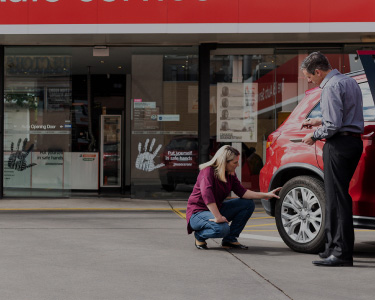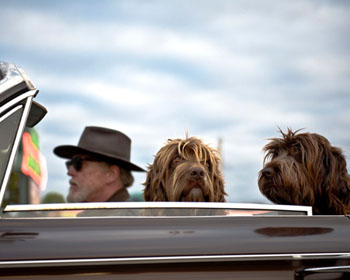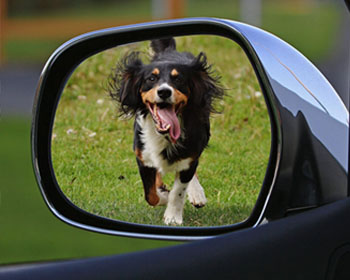Driving with Pets

We’re barking mad.
Australia has one of the highest pet ownership rates in the world, with 62% of us owning some kind of animal. But we’re barking mad about dogs, with 38% of households having a canine companion. And as part of the family, they often travel with us in the car, which seems to make them supremely happy.
So, why do dogs love riding in cars?
Here are a few theories from dog behaviour experts. Dogs have over 200 million receptacles in their noses for picking up scent, so a car ride with the window down is an intense sensory experience for them.Some experts reckon riding in a car feels like hunting to a dog. The forward motion, surrounded by other moving cars makes a dog feel it is part of a pack on a hunting expedition.
Dogs are naturally curious and a car ride is a great adventure for them - full of smells, new sights and sounds.
Laws about animals in cars.
There are rules for travelling with pets in cars and if you break them, the punishments can be hefty. In all states, there’s a care of duty to travel with a pet in a manner that doesn’t cause unnecessary harm. Dogs travelling on trays or in the back of utes must be restrained in a cage or tethered in a way so they can’t fall or be injured. And nowhere are you allowed to drive with a dog or any pet on your lap.Although you don’t need to restrain a dog in a car in Australia, the law requires a driver to have full control of the vehicle at all times. So it makes sense for the safety of your best friend and family to have them secured.
For example, there’s no rule against a dog riding secured in the front passenger seat, but in a collision, airbags deploy with incredible force, which could seriously harm a dog.
Restraining your dog means it won’t be tempted to jump out of the window or accidentally fall out. There’s also less chance of you being distracted by your dog if they can’t jump around. And if you do have an accident, there’s less chance of your dog becoming airborne.
Some restraint.
The most popular way to restrain your dog in a seat is with a car dog harness they wear with an accompanying short lead that’s able to click into the seatbelt. Just make sure it’s long enough for your dog to lie down and be comfortable.
Rear hammocks or rear seat barriers are a great innovation that keeps your dog from jumping into the front, while protecting your car upholstery from all things dog.
A pet crate can be used for smaller dogs and cats and has to be big enough for them to stand up, lie down and turn around, as per RSPCA guidelines. This also needs to be secured and anchored down in the car. In station wagons and four-wheel drives, dogs can be kept at bay in the rear protected by a cargo barrier.
Keep it dog safe.
Here are things to consider to keep a long journey with your dog a howling success.
- Take your dog for a walk before the trip.
- If they are a bit nervous of your car, start off with taking them on short, slow trips.
- Have a dog restraint ready in your car.
- Pack their favourite toy or rug in the car.
- Have enough food and water.
- Stop every couple of hours so they can stretch their four legs and sniff around.
- Don’t let your dog ride with their head out the window due to eye irritations and safety.
- Open the window enough for fresh air.
- Never leave your dog in a parked car as temperatures can soar, even when it’s cloudy.
Had any memorable experiences with your dog in the car? Tell us your thoughts in the comments below or join the conversation on Facebook.

Australia has one of the highest pet ownership rates in the world, with 62% of us owning some kind of animal.


